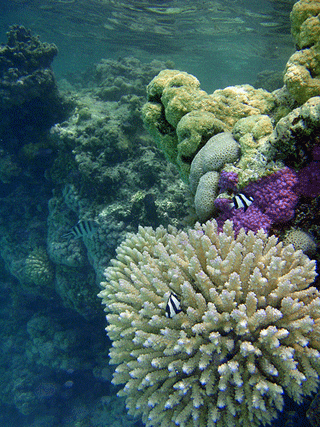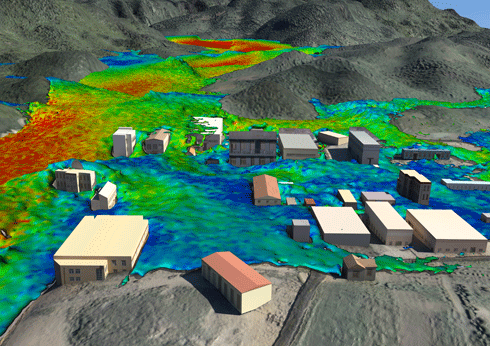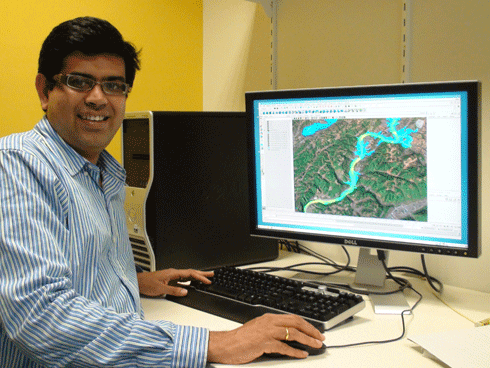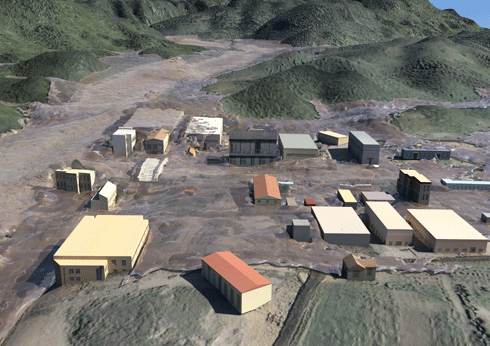
|
Published: 10 April 2012
Could corals survive a warmer, more acidic ocean?
Two new studies suggest that some corals may be better placed to cope with the gradual acidification and warming of the world’s oceans than previously thought – giving rise to hopes that coral reefs might escape climate-change driven devastation. But researchers warn that the picture is not necessarily rosy.

|
|
Coral near the Cook Islands in the Central Pacific. Credit:
Robert Young Rights: Licensed under a Creative Commons Attribution License
|
A team of international scientists working in the central Pacific have discovered that coral that has survived heat stress in the past is more likely to survive it in the future.
The research, published in PLoS shows that in locations where heat stress is naturally more common, coral reefs may be better able to withstand the expected sea temperature rises.
The research was conducted on the remote central equatorial pacific island nation of Kiribati. Corals in this region are subjected to El Niño-driven heat waves, while corals on the islands farther from the equator are less affected.
The researchers analysed coral skeletal growth rates and tissue fat stores to compare how corals from different regions responded to two recent coral bleaching events in 2004 and 2009.
‘Up until recently, it was widely assumed that as the oceans warm due to climate change, coral will bleach and die off worldwide,’ says Dr Jessica Carill of the Australian Nuclear Science and Technology Organisation (ANSTO). Dr Carill played a lead role in the research.
‘The research findings give hope that even though warming of the oceans is already occurring, coral that has previously withstood anomalously warm water events may do so again. While there is certainly more research needed, this appears to be good news for the future of coral reefs in a warming climate.’
Importantly, it will also help scientists understand which areas may be more or less susceptible to bleaching in the future – assisting in the planning for future Marine Protected Areas.
‘We’re starting to identify the types of reef environments where corals are more likely to persist in the future,’ says Assistant Professor Simon Donner, of the University of British Columbia, who is a member of the research team,
For Australia’s Great Barrier Reef, the research delivers mixed news because the reef stretches over such huge distances – meaning some areas have stable temperatures and some do not.
Planning is now underway for potential future studies of coral in areas of the world that have not experienced significant historical changes in water temperatures.
In a separate study, published in the journal Nature Climate Change, a powerful internal mechanism has been identified that could enable some corals and their symbiotic algae to counter the adverse impact of a more acidic ocean.
Greenhouse gas emissions are making the world’s ocean’s more acidic at rates thought to far exceed those seen during past major extinctions of life. This has prompted strong scientific interest in finding out which species are most vulnerable, and which can handle the changed conditions.
The team of scientists behind the research are from the Australian Research Council Centre of Excellence for Coral Reef Studies (of CoECRS), the University of Western Australia (UWA) and France’s Laboratoire des Sciences du Climat et de l’Environnement.
Their research has shown that some marine organisms that form calcium carbonate skeletons have an in-built mechanism to cope with ocean acidification – which others appear to lack.
‘Marine organisms that form calcium carbonate skeletons generally produce it in one of two forms, known as aragonite and calcite,’ says Professor Malcolm McCulloch of CoECRS and UWA.
‘Our research broadly suggests that those with skeletons made of aragonite have the coping mechanism – while those that follow the calcite pathway generally do less well under more acidic conditions.’
The aragonite calcifiers – such as the well-known corals Porites and Acropora – have molecular ‘pumps’ that enable them to regulate their internal acid balance, which buffers them from the external changes in seawater pH (acidity).
‘The good news is that most corals appear to have this internal ability to buffer rising acidity of seawater and still form good, solid skeletons,’ says Prof. McCulloch.
‘But the picture for coral reefs as a whole isn’t quite so straightforward’.
First, the ‘the “glue” that holds coral reefs together – coralline algae – appear to be vulnerable to rising acidity,’ explains Prof. McCulloch.
Also of concern is that a large class of plankton, floating in the open oceans and forming a vital component of marine food webs, appears equally vulnerable to acidification. If so, this could be serious not only for marine life that feeds on them – but also for humans, as it could impair the oceans’ ability to soak up increased volumes of CO2 from the atmosphere. This would cause global warming to accelerate.
Ironically, an added plus is that warming oceans may increase the rates of coral growth, especially in corals now living in cooler waters, explains Prof. McCulloch.
However, the big unknown remaining is whether corals can adapt to global warming, which is now occurring at an unprecedented rate – at about two orders of magnitude faster than occurred with the ending of the last Ice Age.
‘This is crucial since, if corals are bleached by the sudden arrival of hot ocean water and lose the symbiotic algae which are their main source of energy, they will still die,’ cautions Prof. McCulloch.
In the published paper the researchers conclude: ‘Although our results indicate that up-regulation of pH at the site of calcification provides corals with enhanced resilience to the effects of ocean acidification, the overall health of coral reef systems is still largely dependent on the compounding effects of increasing thermal stress from global warming and local environmental impacts, such as terrestrial runoff, pollution and overfishing.’
Source: Australian Research Council Centre of Excellence for Coral Reef Studies, University of British Columbia and the Australian Nuclear Science and Technology Organisation






